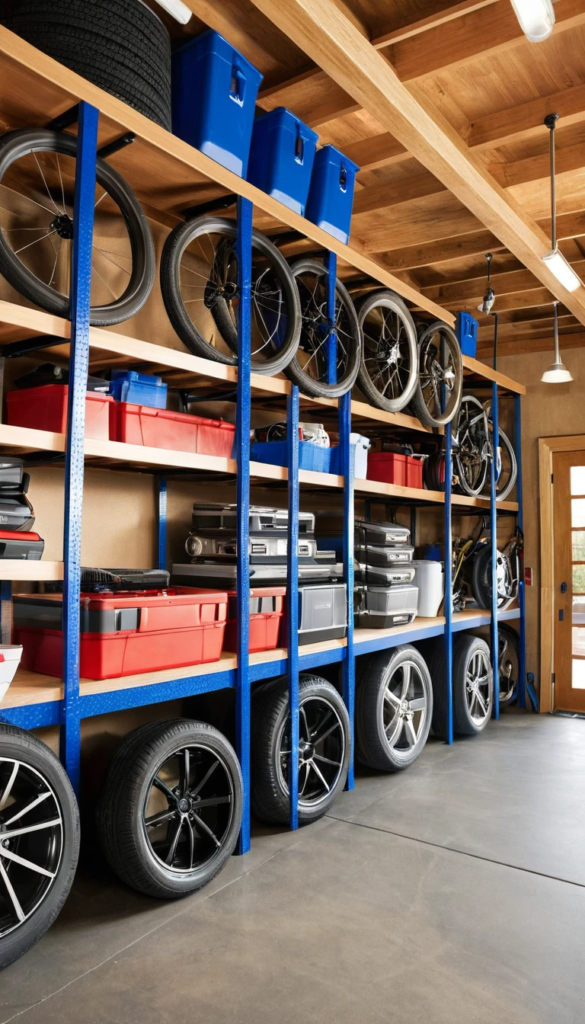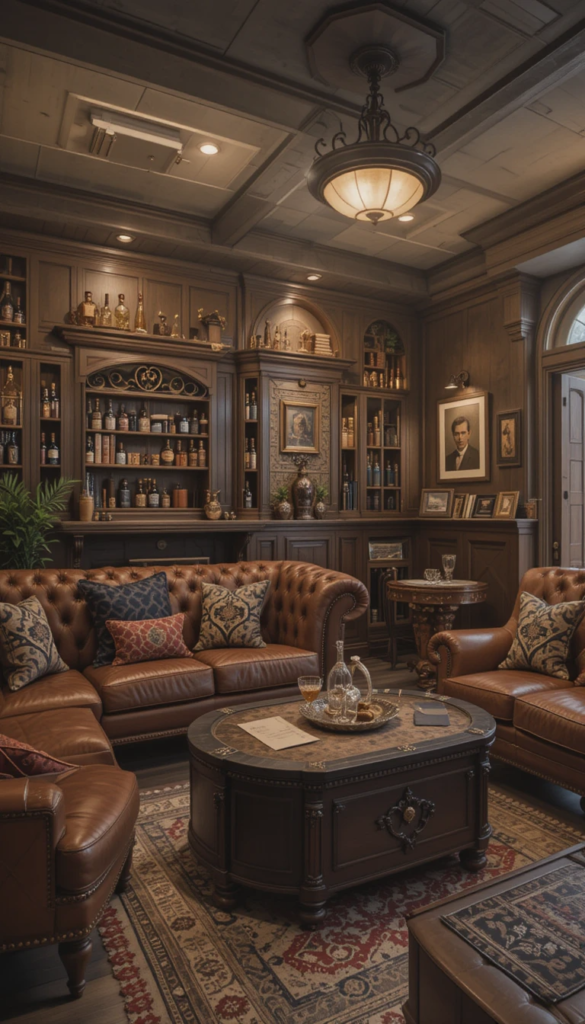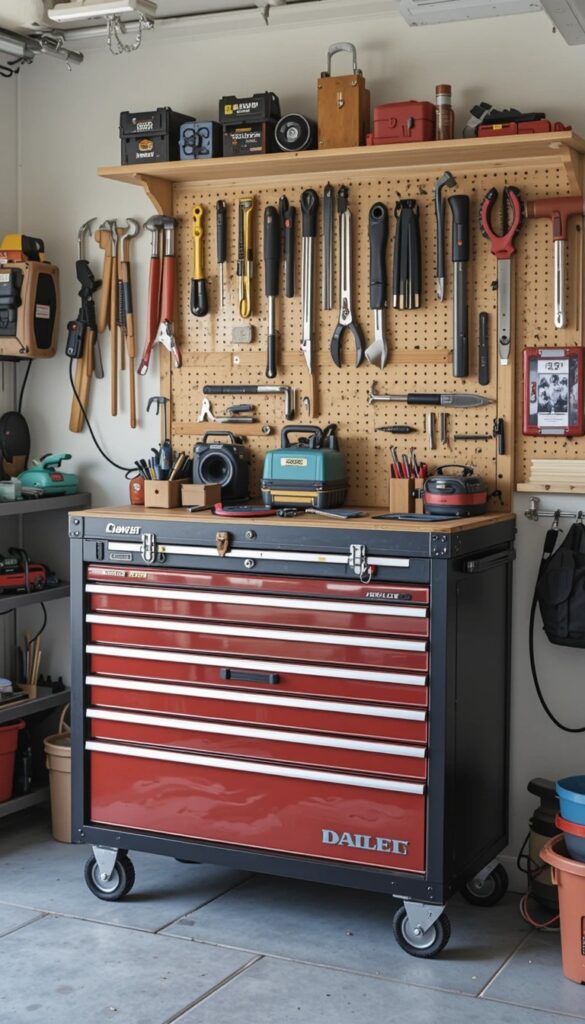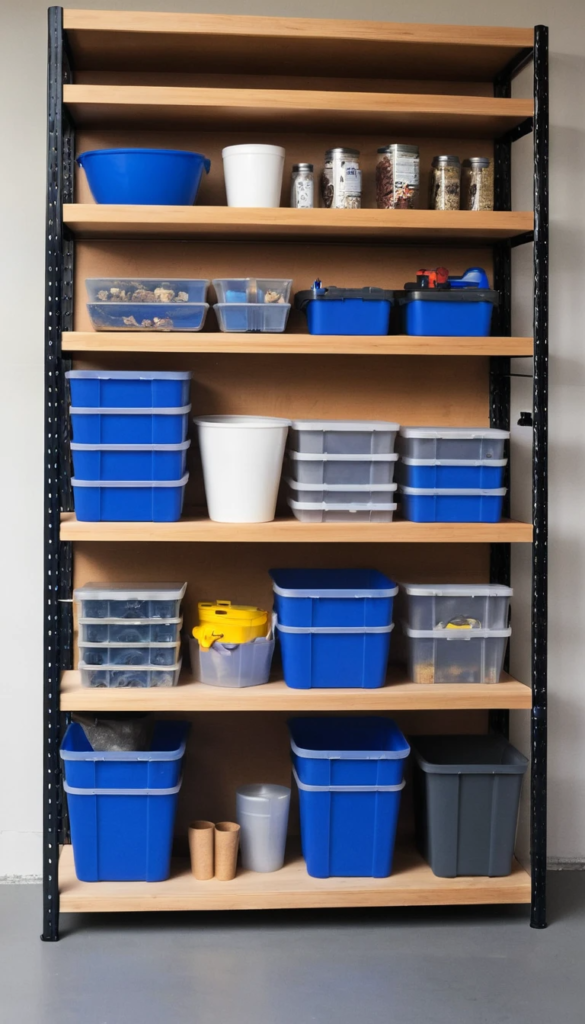Garage Flooring Ideas — It’s no secret that garage flooring has an important role to play in turning your garage into a functional and stylish space. Not just creating a good look, but also long-lasting and easily cleaned. Here are some Popular Garage Flooring Ideas: Epoxy coating: Provides a glossy, durable finish. Interlocking tiles: Easy to install and customize. Polished concrete: Offers a clean, polished floor.
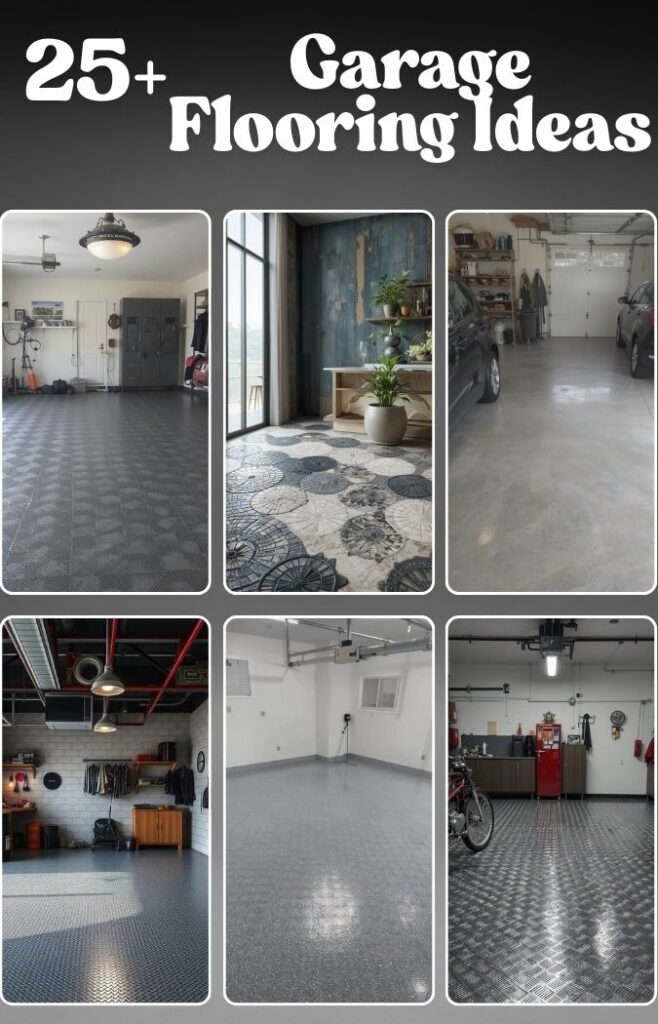
These options can withstand stains, chemicals, and heavy foot or vehicle use. Whether you’re constructing a workspace, home gym, or simply enhancing your storage, optimal garage flooring will have your space looking good and performing well.
Garage Flooring Ideas
- Epoxy Coated Floor – Tough and shiny, excellent for heavy use.
- Interlocking PVC Tiles – Simple to install and replace single tiles.
- Polished Concrete Floor – Contemporary and easy to maintain.
- Rubber Floor Mats – Perfect to absorb vibrations in the gym or work area.
- Painted Concrete Floor – Small budget upgrade; lots of color options.
- Vinyl Floor Tiles – These are stylish and moisture-resistant.
- Garage Carpet Tiles – Soft, durable, yet made for garage conditions.
- Polyaspartic Coating — Quick-curing, UV-resistant solution.
- Industrial Grade – Diamond plate flooring with a rugged appearance.
- Textured Concrete – For increased traction and a unique look.
- Sealed Concrete – Simple, clean, and dust-resistant.
- Plank Vinyl Flooring — Chic and water-resistant.
- Mosaic Tiles – Comes in customizable colors and patterns.
- Granite Chip Epoxy Floor – Terrazzo or speckled appearance for looks.
- Roll-Out Vinyl Flooring – Simple to install and clean.
- Pebble Stone Epoxy Floors – Luxury garages come with a natural stone finish.
- Acrylic Flake Flooring – Derek – It’s waterproof and provides texture, color, and durability.
- Concrete Stain – Both colors and depths are added to simple concrete.
- Safety-focused with grip – Add eclectic colors when painting with an anti-slip additive.e
- High-Quality Gym Flooring Mats – Durable, protective mats for fitness spaces.
- Highly durable, chemical-resistant quartz epoxy floor.
- Stamped Concrete – Two-tone concrete mimics stone, tile, or brick with texture.
- Personalized Logo Carpet Print – Ideal for branding or personality
- Glow in the Dark Epoxy — One of the coolest, unique epoxy resins that you can use at night.
- Checkerboard Tile Layout – timeless black and white contrast.
- Matte Epoxy Finish – Smoo,th mod,e rn and industrial alternative to glossy finish.
- Tiled Trench Drain System – Ideal for wash bays or wet areas
- Faux Marble Epoxy Finish – Wall clock store ambiance in your garage.
- Quick Cure Hybrid Polymer Coating — Strength meets quick cure.
- Colored Resin Coating – Cover your garage floor with fun, customized colors.

How to Design Garage Flooring
1. Epoxy Coated Floor

- Clean & Etch Concrete – Clean dust, oil, and stains, then etch for proper adhesion.
- Mix & Apply Epoxy – Mix (resin and hardener) and roll evenly.
- Add Flakes & Top-Cover — Add decorative flakes and a topcoat for protection.
2. Interlocking PVC Tiles

- Sweep and level the existing floor surface.
- Layout Plan – Center or corner point, dry-fit tiles.
- Snap Tiles Together — Interlock tiles with a rubber mallet; trim edges as necessary.
3. Polished Concrete Floor
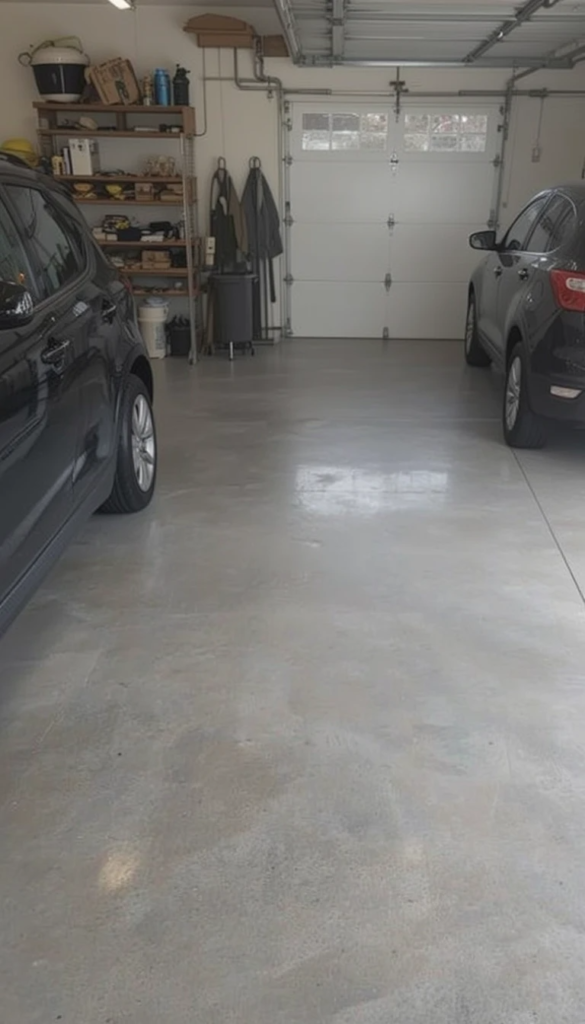
- Grind the Surface – A concrete grinder will remove high spots and make the surface smooth and level.
- Polish – Using fine grits (500, 1000, 2000, etc.), polish up to the desired sheen.
- Seal the Floor – Use a penetrating sealer that repels stains and dust.
4. Rubber Floor Mats
- Measure & Choose Mats — Get heavy-duty mats that fit the dimensions of your garage.
- Clean Floor Area – Sweep and dry the area where the mats will be placed.
- Lay Down & Secure Mats – Roll out mats, and secure them with double-sided tape or weights if necessary.
5. Painted Concrete Floor

- Prep & Clean Concrete – Fill in cracks, clean, and etch.
- Get Primer – Make sure to use a masonry primer as your bond.
- Roll on the Paint — Use concrete paint and a roller for an even coverage; apply a second coat if needed.
6. Vinyl Floor Tiles

- Smooth & Dry Floor — The concrete should be flat and dry.
- Tile Layout Planning – If possible, start from the center or key line to achieve an equal distribution of tiles.
- Peel & Stick or Glue Down – Utilize self-adhesive tiles or use flooring adhesive as needed.
7. Garage Carpet Tiles
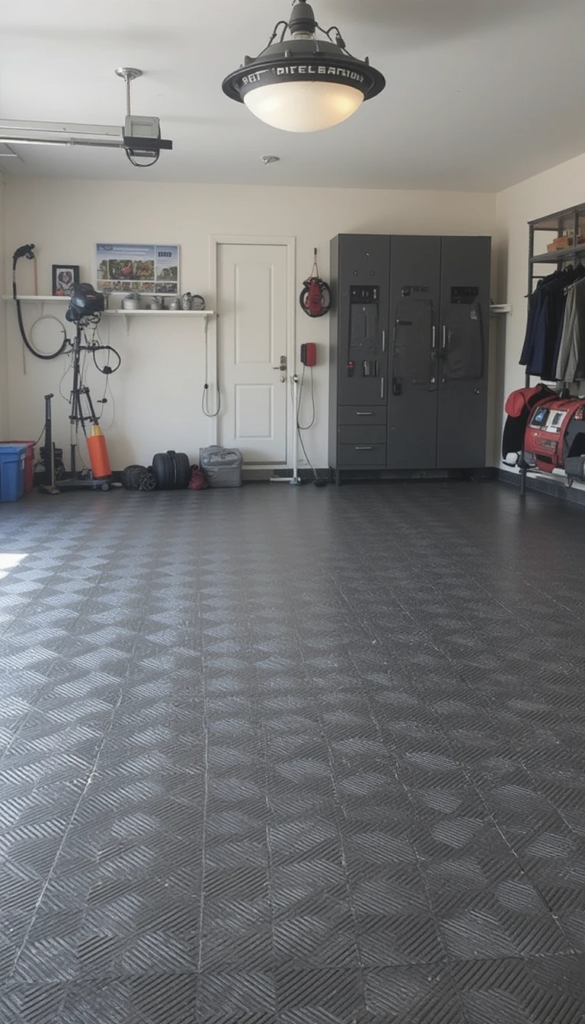
- Dry – Make sure the floor is dry and free from grease.
- This week, Layout Tiles – Place your carpet tiles in your pattern of choice.
- Stay or Interlock — Install peel-and-stick tiles or interlocking tiles and push them firmly into position.
8. Polyaspartic Coating
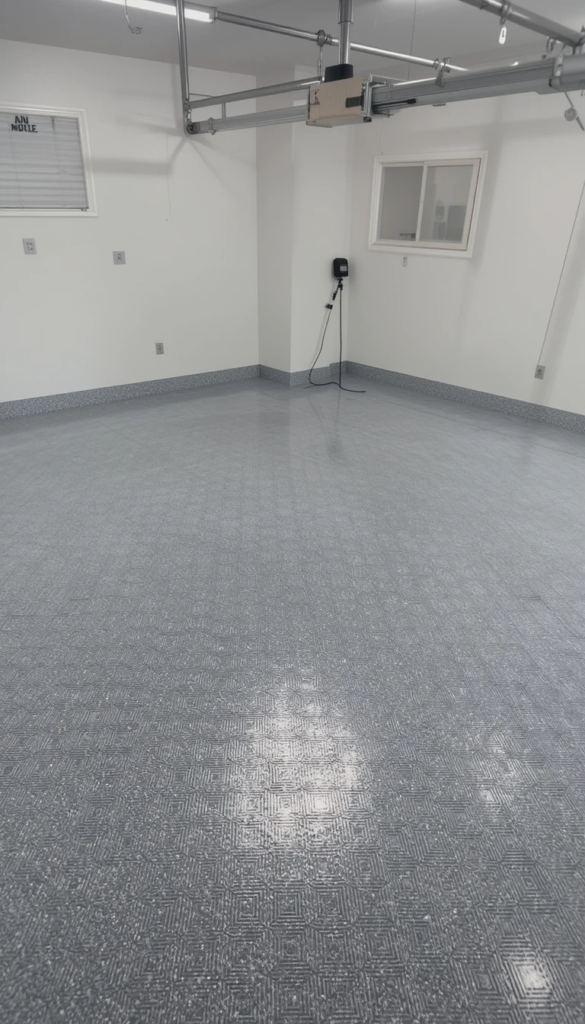
- Surface Preparation – You need to clean, degrease, and grind the concrete.
- Mix & Apply Coating – Mix the polyaspartic resin and roll it onto the floor.
- Topcoat & Cure – Optional clear topcoat; cured within hours.
9. Diamond Plate Flooring Industrial grade

- Measure & Cut Plates – Measure and cut the aluminum or steel diamond plates according to your design.
- Clean & Prep Base – Remove any dust or debris from the floor.
- Install Plates – Attach the plates securely to the subfloor, either with screws or with a type of adhesive.
10. Textured Concrete

- Use Overlay – Add a new layer or coat the existing surface.
- Texture Application – Make patterns with stamps or brushes on wet concrete.
- Sealing It for Protection – Once the surface cures, put on a weatherproof sealer.
11. Sealed Concrete
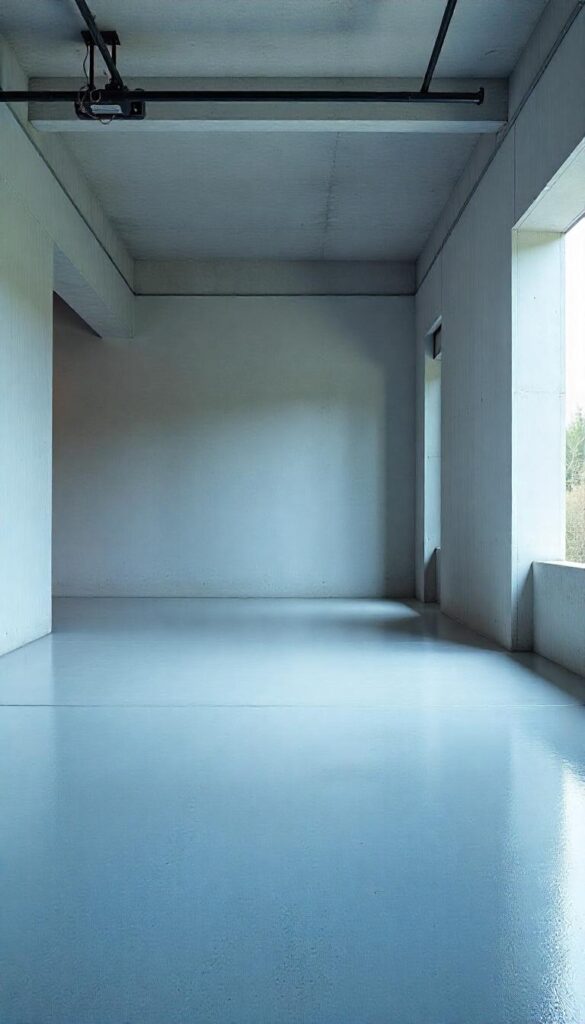
- Clean and degrease the concrete surface completely to evacuate all soil and oil.
- Apply a concrete sealer equitably employing a roller or sprayer, covering the whole floor.
- Permit the sealer to remedy completely some time recently moving vehicles or things back into the carport.

As the creative force behind DesignsDIY.com, Gabriella (Viverito) Carlson is living her passion in the ever-evolving world of interior design. With an eye for detail and a heart for design, Gabriella believes that true success lies in expressing her creative nature through meaningful client relationships and collaborative team efforts.

